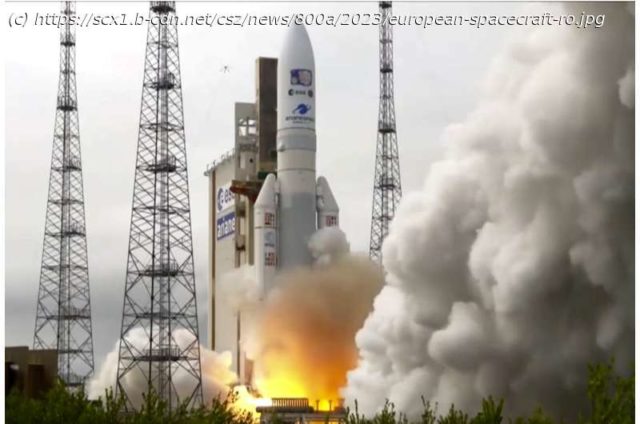A European spacecraft rocketed away Friday on a decadelong quest to explore Jupiter and three of its icy moons that could have buried oceans.
A European spacecraft rocketed away Friday on a decadelong quest to explore Jupiter and three of its icy moons that could have buried oceans.
The journey began with a morning liftoff by Europe’s Ariane rocket from French Guiana in South America. Arianespace’s chief executive Stephane Israel called it «an absolutely perfect launch.»
But there were some tense minutes later as controllers waited for signals from the spacecraft nearly an hour into the flight.
When contact was confirmed, European Space Agency’s Bruno Sousa declared from Mission Control in Germany: «The spacecraft is alive!»
It will take the robotic explorer, dubbed Juice, eight years to reach Jupiter, where it will scope out not only the solar system’s biggest planet but also Europa, Callisto and Ganymede. The three ice-encrusted moons are believed to harbor underground oceans, where sea life could exist.
Then in perhaps the most impressive feat of all, Juice will attempt to go into orbit around Ganymede: No spacecraft has ever orbited a moon other than our own.
With so many moons,— at last count 95—astronomers consider Jupiter a mini solar system of its own, with missions like Juice long overdue.
«We are not going to detect life with Juice,» stressed the European Space Agency’s project scientist, Olivier Witasse.
But learning more about the moons and their potential seas will bring scientists closer to answering the is-there-life-elsewhere question. «That will be really the most interesting aspect of the mission,» he said.
Juice is taking a long, roundabout route to Jupiter, covering 4 billion miles (6.6 billion kilometers)
It will swoop within 125 miles (200 kilometers) of Callisto and 250 miles (400 kilometers) of Europa and Ganymede, completing 35 flybys while circling Jupiter. Then it will hit the brakes to orbit Ganymede, the primary target of the 1.6 billion-euro mission (nearly $1.






